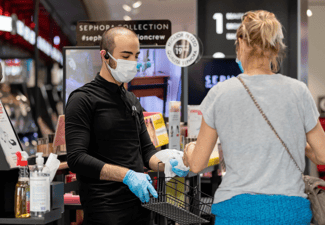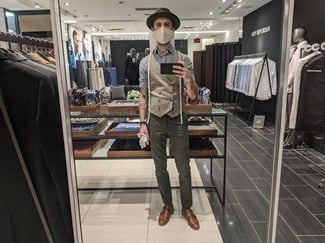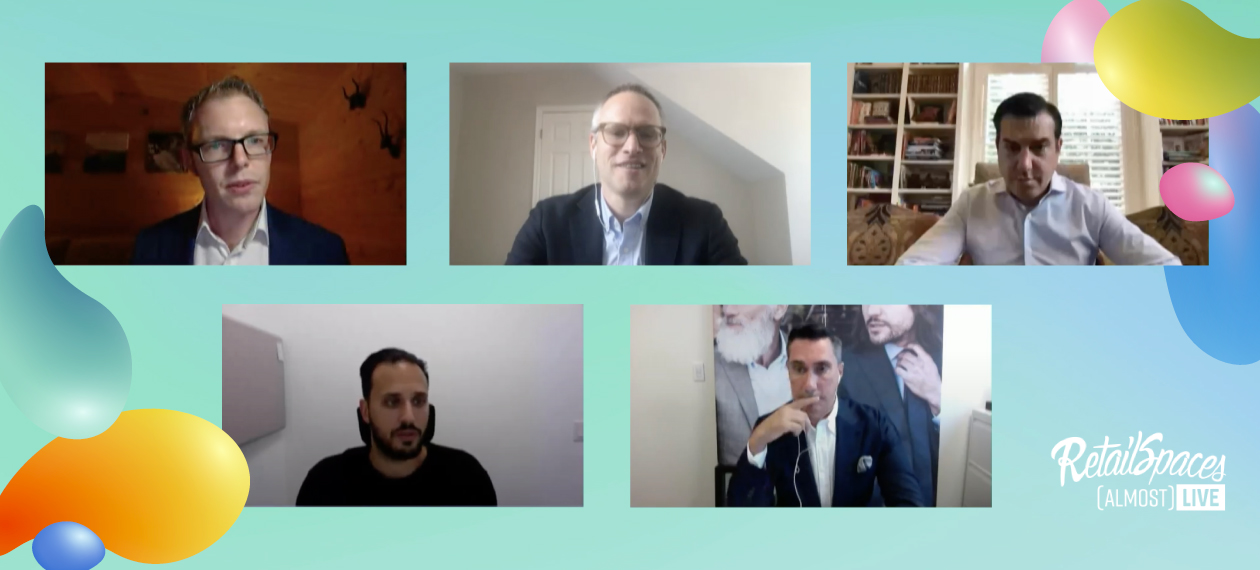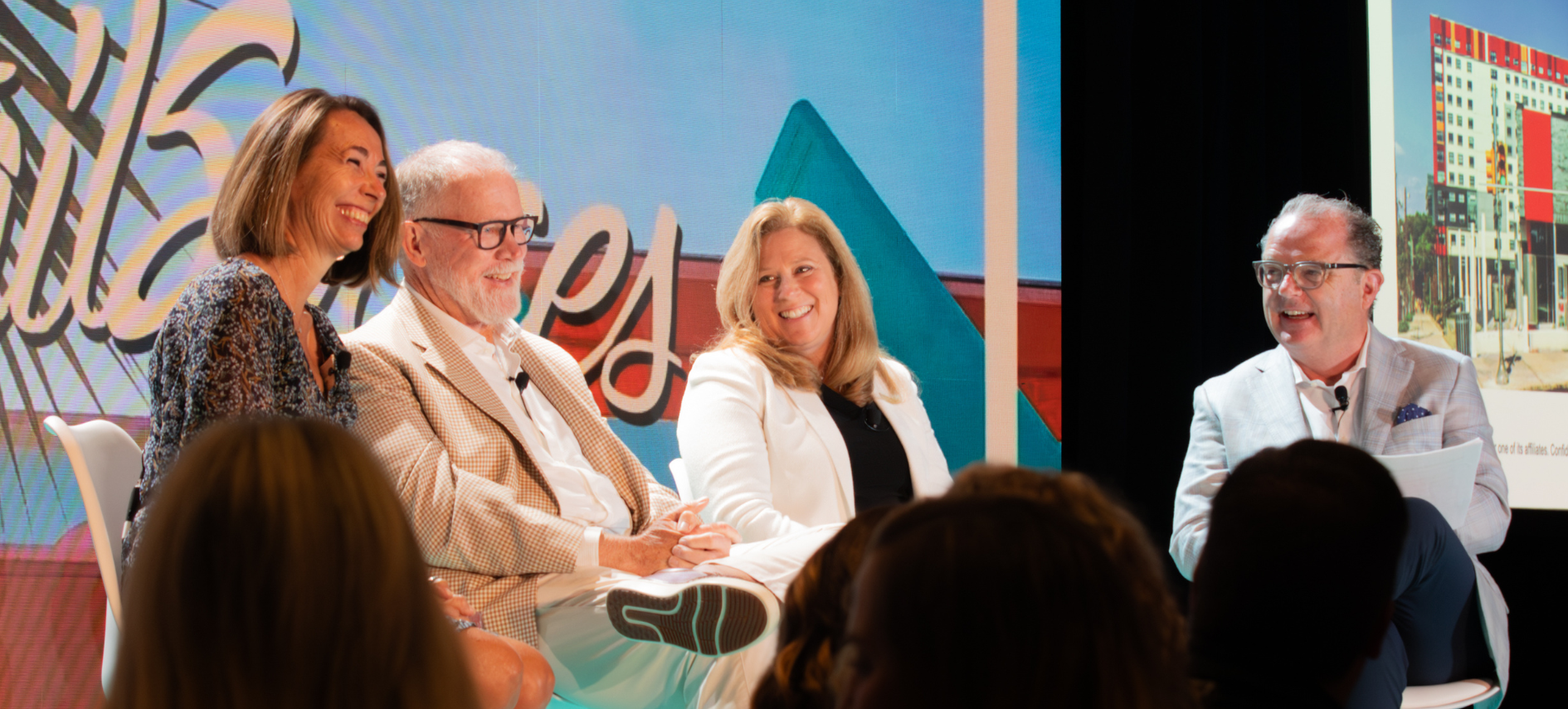Months of uncertainty and store closures in an unprecedented year were certainly tough for retailers… but there were definitely lessons to be learned amid the chaos as well.
As companies move beyond the reopening phase, they’re also broadening they’re thinking when it comes to reimagining what the inside of their stores could look like and how those spaces serve customers.
How brands are adapting for what lies ahead was the focus of a fast-paced discussion at RetailSpaces (Almost) Live.
Moderator Oliver Banks, chose to frame the conversation around “DC/AC; During COVID, After COVID. How much of our time are we thinking of things in the moment, focused on 2020, versus how much on 2021 and beyond."
The answer for retailers such as Sephora, INDOCHINO and American Dream — a retail space and amusement park — is twofold. They're pivoting their sales and in-store experiences to meet customers' expectations during the virus, but looking at how to incorporate those changes and advances in technology to shape their retail future.
An Abrupt Stop
COVID changed everything in Sephora's operations, Jeff Gaul, senior vice president of store development for Sephora, said.
"When COVID first started spreading all the health organizations said 'don't touch your face,'" he said during the panel. "At Sephora, that's our primary way of doing business and how we operated."
While stores were closed to customers, Sephora began to rethink their in-store experience, crafting a 90-page handbook detailing how beauty advisors would interact with guests and what operations would be able to continue when doors reopened.
It's been a similar story for Dean Handspiker, vice president of retail at INDOCHINO.
"It has changed our model," he said. "We took time during the closure to have our team build a [plan] to reopen. Do their own research and come up with a solution."
For American Dream co-CEO Mark Ghermezian, COVID completely derailed plans for the retail and entertainment complex, which was slated for a grand opening in March, though elements of the venue had opened in fall 2019.
"We were planning to open retail and the waterpark on March 19," he said. "That didn't happen. We had to pull things back."
Making Changes
Sephora, INDOCHINO and American Dream have each taken steps to ensure customers and team members feel safe in their spaces since reopening this spring.
“We were primarily appointment-based but did have walk-ins," Handspiker said of INDOCHINO. "Now we're strictly appointment-only to ensure the safety of our client and teams."
By shifting entirely to appointment, Handspiker said the busiest stores have limited stores to three appointments in an hour compared to 10 pre-COVID.
At Sephora, the immediate focus has been on hygiene.
"One of the first things we did was reimagine the entire store experience from a hygiene perspective," Gaul said.

|
The company also created a new position to greet clients as they walked in. Adding hand sanitizer throughout the store and wiping down surfaces frequently are just a few of the ways Gaul feels the company is making customers feel safe.
"We're doing everything possible to keep everyone in a safe and secure environment," he said. "We hope to move forward as we can to create unique ideas that aren't always hygiene-based but that's really where our focus is right now."
American Dream, which is slated to open imminently in October 2020, has taken a page from Disney when it comes to reopening.
"For us, we're high-touch in experiences and attractions," Ghermezian said. "The first thing I wanted to do was really do everything we could to be transparent for our guest. We were studying a lot of what Disney was doing."
While American Dream looked to Disney for guidance, they also formed a partnership with the Hackensack hospital to create Dream Safe, a way to ensure guests understand the venue's cleaning practices and what is expected when visiting certain attractions.
"It talks about what we are doing from hand sanitization, wipe downs, requiring masks and the training associates ("Dream Makers") go through as we come to this new world," Ghermezian said.
What's The In-Store Experience About?
While retailers are adapting to the realities of the pandemic, Chris Walton, co-CEO of Omni Talk and senior contributor at Forbes, said they also must put renewed focus on understanding their brand and what their stores are about.
"I don't necessarily think people will yearn for more consumer action, I think they are going to yearn for what a retail brand provides to customers and the answer to why they exist," he said.
Physical retail spaces have long been a place for inspiration, immediate gratification and convenience for consumers, he said.
"They have been a place of taction - the ability to touch, try products on and do all the things you do to have confidence in a purchase you're making," he said.
Different brands address those items in different ways in a physical world.
"You look at Sephora, they are still about inspiration," he said. "It's about serendipitous discovery."
American Dream is similar by focusing on the social experience of going and doing something, he said.
With INDOCHINO, you have the taction element, you want to touch the suit, know it's going to fit, Walton said.
"We're seeing, fundamentally, retailers having to grapple with the fact that they need an answer to 'why?" across the physiological dimensions," he said.
Those are questions that Sephora, INDOCHINO and American Dream are busy answering, combining their previous in-store focus with new elements, while ensuring customers who prefer to continue online shopping aren't missing out on experiences.
Leaning on Tech
When stores closed abruptly at the beginning of the pandemic, sales didn't stop. Instead, retailers leaned on their online platforms to keep consumers engaged.
With stores now open, they continue to utilize technology and look toward more integration of apps and online marketplaces.
"We will continue to live with two channels side by side to the extent that we don't see them as separate channels, but as one that supports one area of the business and one that supports the other," Handspiker said.
In fact, for INDOCHINO, Handspiker notes that most customers' journeys begin online with investigation and looking at different options before they eventually make an appointment for an in-store visit.

|
As customers, especially those who have already purchased from the company, continue to shop online, INDOCHINO will continue to investigate ways of integrating the two channels.
"We're able to do next day or week pickup in-store, that allows us to utilize our locations," he said, adding that showrooms will still be the best place for customers to see, touch and purchase suits.
"The spaces need to bring the brand to life, and inform and inspire," he said. "They are not going away, but we have to bring our online channel into the fold. It's an extension."
At Sephora, Gaul said the company is looking for ways to translate the discovery of products found at stores to its online counterpart.
"Our client doesn't wake up and say I'm going to shop online or shop in store, they think I need something from Sephora today," he said. "They may start with the app, then come to the store to experience it or talk to a beauty advisor, then they might finish by ordering online from home after doing more research."
Since the onset of the pandemic, Sephora has shifted to meet customers who only want to shop online.
"Typically, a lot of times, digital is task oriented, 'I'm out of mascara, I'm out of foundation, or I need to buy shampoo,'" he said. "So you go online and buy this. You're not really spending the time doing discovery as you would if you walked into one of our stores."
Gaul said the company wants to ensure clients have the opportunity to be surprised or delighted while shopping online as they would have if they shopped in-store.
"We want to make sure we are coming up with new ways to innovate and things that are super inviting for clients," he said. "There's a lot of different ways, and we will of course shift, that's what retailers do no matter what is happening in the world. We pivot, we shift, we adjust. Retail is all about the details."
American Dream has also relied heavily on technology in recent months.
"Through the pandemic we actually redid the ticketing platform connected to attractions," Ghermezian said.
The new platform allows American Dream and its staffers to better understand the needs of customers and better communicate what they might expect when arriving.
This has been achieved through the company's app, where customers detail when they’ll arrive, find information on safety and hygiene processes and other vital information.
"The way we can control the customer service is through communication and what to expect when you arrive," Ghermezian said. "We've doubled down on that to communicate with guests prior to arrival."
American Dream has also begun looking at its entire ecommerce strategy and how it can leverage the retailers in its venue.
"We're going to work with partners like Sephora at American Dream," he said. "We don't want their sales to be limited to these four walls, we want their sales to be limited to the depth of our customers we can get to. We are going to create these distribution channels to enable them to do that."
As for the idea that customers are tired of buying and shopping online, a phenomenon called “tech fatigue,” Walton doesn't buy that.
"When in the course of human history have you heard 'I'm going to stop using tech in a way that makes my life easier?'" he said.
Customers and retailers will continue to utilize technology.
"With COVID, what you're seeing is a ton of innovation and activity," he said. "Despite issues we've had in retail, that whole thing that hasn't happened, a new commerce platform to discover and engage with products we haven't done before. Whether that's Instagram, things that Shopify is doing, all those types of companies are going to go after that, and we as consumers will adapt to that."
A Physical Change
Though retailers may begin to incorporate more online elements into their physical stores, including online reservation and pick-up, you likely won't see a drastic difference in the number of stores around the country.
"We actually don't think the physical plan for our stores will change much," Gaul said of Sephora. "We were planning to open 100 stores pre-COVID and we're still moving forward with 70 locations in the U.S. and Canada next year."
By reopening existing locations and opening new stores, Gaul said the company will be able to make it easier and convenient for clients.
"We want to make it simple for her to experience our brand and all we have to offer," he said. "We have to remember the pandemic is not going to last forever. We'll get back to normal and things that carryover, we want retail to be a fun experience."

Posted by
Physical Retail Reimagined.
RetailSpaces is a community for store development and design innovators.
March 29-31, 2026 | San Antonio, TX
Learn More!









Comments